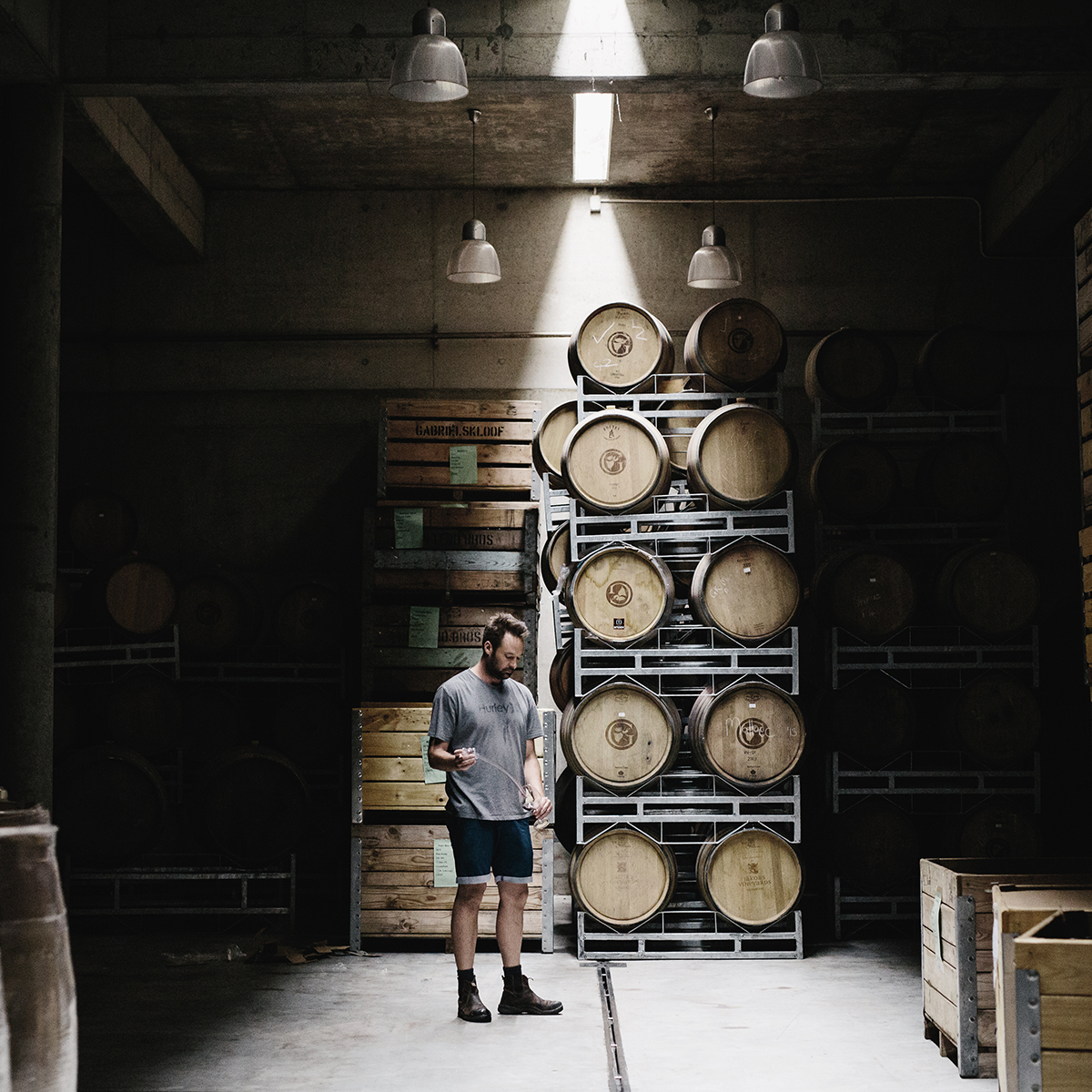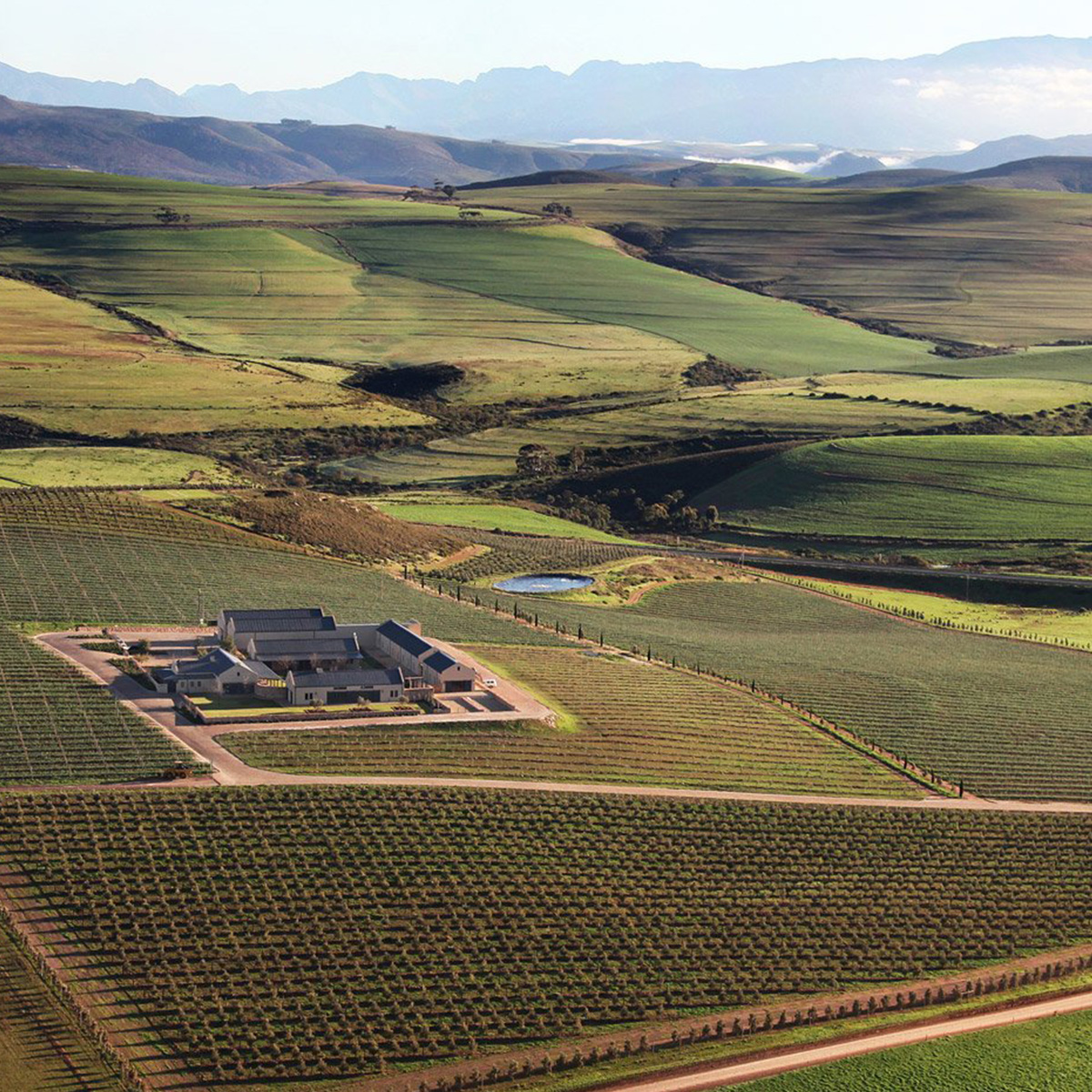
Located in the emerging Overberg region, Gabriëlskloof was founded by Bernhard Heyns in 2001 when the land was just wheat fields and sheep pasture. However, he saw huge potential in the area, buying a site which has since grown to over 60 hectares of vines. Innovative and precise winemaking is fundamental to the Gabriëlskloof philosophy, which is further reinforced by Bernhard’s son-in-law, Peter-Allan Finlayson of Crystallum.
Peter-Allan took over as winemaker from the 2015 vintage and steered the estate in a new direction. He has championed the use of indigenous yeast, whole bunch ferments and vessels such as clay amphorae and older oak, to express the quality of the fruit and better convey a sense of place in the wines. Peter-Allan now works as Cellar Master alongside the talented Anmar Van Niekerk, who became the estate’s winemaker at just 28. Together, they continue to elevate the wines to new heights. As a result, Gabriëlskloof was named as a First Growth in Tim Atkin’s 2023 and 2024 South Africa report.
Situated on undulating hills in Bot River (Botrivier), Gabriëlskloof’s vineyards are exposed to prevailing southerly winds from the Atlantic Ocean and Walker Bay. This stresses the vines and results in low yields of intensely concentrated fruit. The exposure also has a cooling influence, extending the growing season and encouraging slower ripening and increased flavour development, while retaining fresh acidity. The soils are Bokkeveld Shale and sandstone with quartz, known to restrict vigour and are particularly well-suited to producing perfumed and elegant expressions of Syrah and Cabernet Franc.
The vineyards are farmed sustainably with the support of vineyard consultant Rosa Kruger (hailed as “the queen of the Cape’s old vines” by Tim Atkin MW). Biodiversity is keenly encouraged with the use of cover crops and hundreds of species of fynbos, removing the need for pesticides. No herbicides are used, and instead, mulching is also carried out, which in turn retains soil moisture and enhances organic matter. They aim to move to organic farming in the future.
The ‘Amphora’ Sauvignon Blanc is sourced from estate fruit, as well as one third from the Skurfberg, an isolated and high elevation area known for producing low yields of intensely concentrated fruit. As its name suggests, fermentation and ageing occur in clay amphorae, resulting in layered and complex notes of orange blossom, wild herbs and wet stone. Made from old bush vine Chenin Blanc, the ‘Elodie’ Chenin Blanc is fermented in old French oak barrels. The nose offers subtle peach and apricot aromas, coupled with layers of almond and white flowers. The palate is opulent with excellent natural acidity and freshness, typical of old vine Chenin.
The ‘Whole Bunch’ Syrah is vibrant and pure. 100% whole bunch fermented, it has vivid aromas of violets, bramble and black pepper. The fruit for their Cabernet Franc comes from a 20-year-old single vineyard. It is fermented in 500-litre barrels and aged for 18 months, using 30% new French oak. On the nose, it offers notes of tobacco leaf, bell pepper and dark plums. Vines for the ‘Syrah on Sandstone’ are planted on a mountainous site made up of broken sandstone rock. This challenging environment leads to low vigour and very small yields. The wine is savoury, with black olive, white pepper, violets and an effortless cool-climate elegance. The ‘Syrah on Shale’ is denser and more brooding, sourced from a single Bokkeveld shale site on the Gabriëlskloof property. It has notes of cassis, black pepper and Mediterranean herbs.
All wines from this producer
Producer | Wine | Product Code | Features | Style | |
|---|---|---|---|---|---|
| Gabriëlskloof | Bot River Sauvignon Blanc | GA501 | W | Factsheet | |
| `Magdalena` Semillon | GA502 | W | |||
| `Elodie` Chenin Blanc | GA503 | W | Factsheet | ||
| `Rosebud` Bot River | GA504 | Ro | |||
| `The Blend` Walker Bay | GA505 | R | Factsheet | ||
| Walker Bay Cabernet Franc | GA506 | R | Factsheet | ||
| `Syrah on Shale` Walker Bay | GA507 | R | Factsheet | ||
| `Syrah on Sandstone` Bot River | GA509 | R | Factsheet | ||
| `Whole Bunch` Syrah | GA510 | R | Factsheet | ||
| `Amphora` Sauvignon Blanc | GA511 | W | Factsheet |



